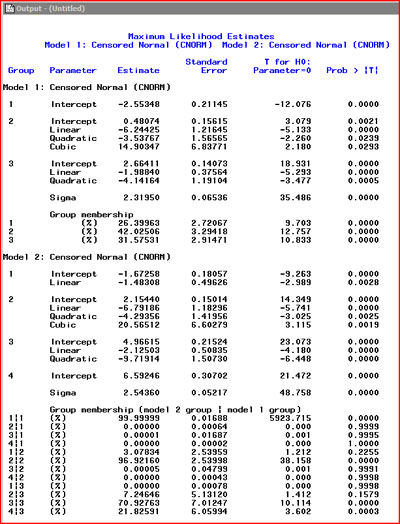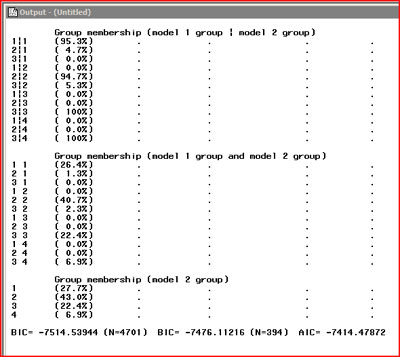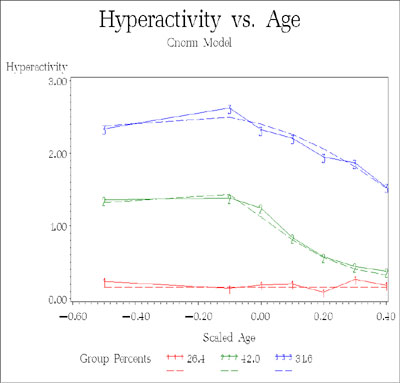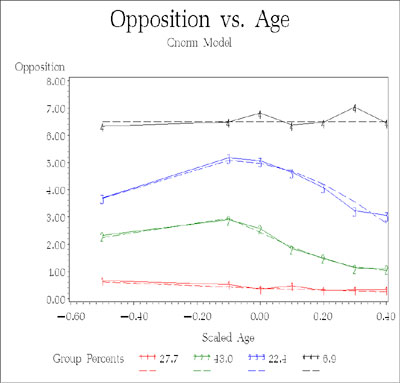Example (strtxmpl2.sas): creating start values to fit a joint trajectory model.
This example shows how to create starting values to assist in fitting a joint trajectory model. We will use hyperactivity and opposition scores (hyperactivity scale - 0 to 4 and oppositional behavior scale - 0 to 10) from the Montreal Longitudinal Study.
The results from the single trajectory models for each behavior will be merged to create start values for the joint trajectory model. To simplify the example, we'll start assuming we've established the appropriate number of groups and orders for the two single trajectory models.
Step 1: Fit the trajectory models for hyperactivity and oppositional behavior separately.
Trajectory models for hyperactivity and oppositional behavior.
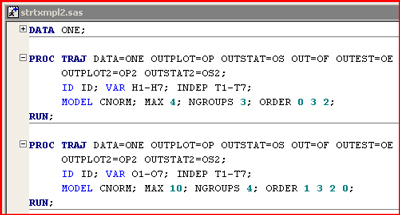
Single trajectory model results for hyperactivity and oppositional behavior.
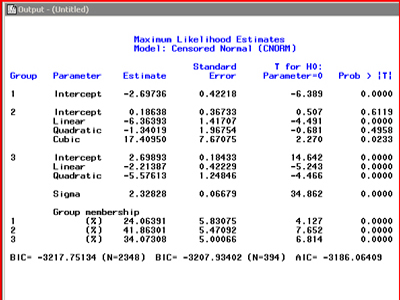
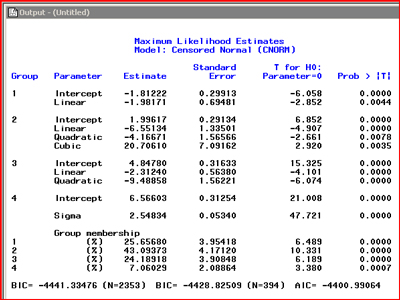
|
|
Parameter estimates also appear in the log for easy cut and paste.


Step 2: Create start values for the joint trajectory model from the parameter estimates for the two single trajectory models.
- The parameter estimates are copied from the log after running the single trajectory models.
- For the first portion of the joint trajectory start values, we can use the complete results from the first model including the first model group percentage estimates.
- For the second portion of the joint trajectory start values, we can use the trajectory parameter results from the first model but not the unconditional group percentage estimates (the second part of the joint model uses conditional group percentages.)
- But we need to provide something for the conditional group percentages for the model.
- An easy choice is to assume all equal conditional percentages to start.
- For this example there are three groups of values (the number of groups for the first model) with four values (the number of groups for the second model) in each group.
- Each group of conditional group percentages must add to 100.
Joint trajectory model.
.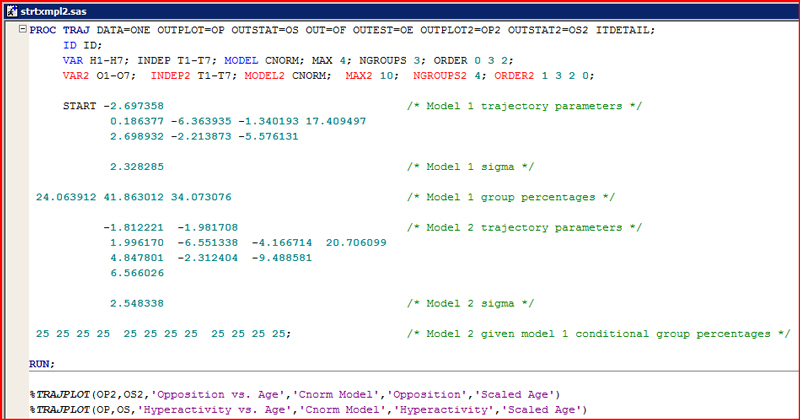
Joint trajectory model results.
